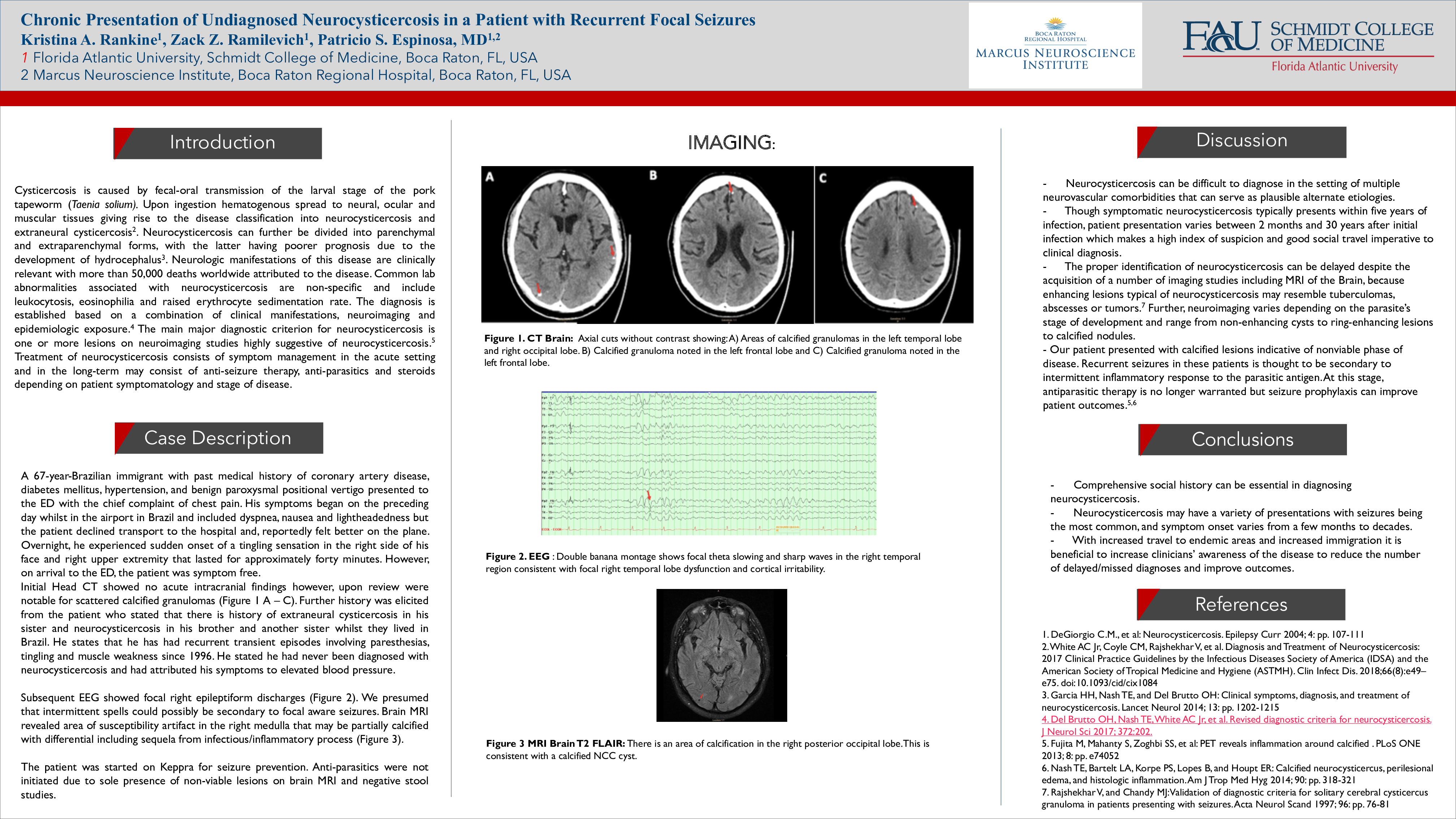Abstract
Neurocysticercosis is a neurological disorder caused by infection of the CNS secondary to ingestion of larvae of the pork tapeworm, Taenia solium. It is the most common parasitic infection of the CNS worldwide and is endemic in Central and South America and parts of Asia.1 Neurocysticercosis is increasingly seen in developed countries, like the United States, most often in immigrants or visitors from endemic areas. Patients most commonly present with seizures, headaches and focal neurologic deficits2. Because of the variability in symptoms, variation in time to presentation and lower incidence in the United States, a high index of suspicion is required in clinicians in order to establish diagnosis. In this poster, we describe a patient who presented with paresthesias in his right upper extremity and the right side of the face suggestive of focal seizure found to be secondary to neurocysticercosis with question of exposure over 20 years prior.






